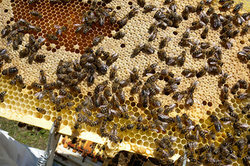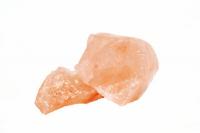Local honey
Germans like to eat honey. Statistical figures, according to which every German consumes around 1.4 kilograms per year, prove this. The local beekeepers manage to meet around 20 percent of this demand. The sweet treasure from the region is something very special.

Buy the honey Your local beekeeper. It is not an exaggeration to say that this one tastes very different and much better than the goods from the supermarket. Why it is like that? Continue reading.
The sweet gold from the region - quality from the little beekeeper
- Honey contains many valuable ingredients that come from the plants in the region where the bees collected the nectar. Linden honey contains linden pollen and it also tastes intensely of linden blossom. In spring honey you can find pollen from fruit blossoms, dandelions, herbs and grasses that were in bloom at the time. The composition therefore corresponds to the landscape of your environment. It is therefore true that pollen allergy sufferers are advised to eat honey from their own region over the winter. The tiny amounts of pollen allow the body to slowly get used to it.
- But even as a non-allergic person, you should rather buy the products of your beekeeper around the corner, because here you know That you are not getting a mixture from all over the world, but a regional product with typical Properties. Taste the spring spin and later the summer harvest from your beekeeper. You will be amazed how different and delicious the local products taste.
- Many small beekeepers who do not migrate with their bees sell mixed honey. That doesn't mean a lower quality. On the contrary, this honey is often very spicy and has an individual taste. If the glass says “spring blossom”, look around the beekeeper. What blooms here in spring is in his glasses. The more varied the vegetation, the richer the variety of nectar and pollen. You taste that.
- But pure honey can also be produced by a small beekeeper. Is rapeseed blooming in the immediate vicinity? Or is the place adorned with an avenue of lime trees? Do some locust trees grow nearby, or do the bees even collect the sweet dew from fir and spruce trees? With all these varieties, you can be sure that with your purchase you are not only supporting the beekeeper, but also the environment, which depends on the pollination of bees.
Honey from the beekeeper - useful information for buyers
There are blossom and forest honey, solid, creamy or liquid. Some varieties are ...
Buy honey - you should know that
- On the glasses in the supermarket there is sometimes a reference to the origin "EC and non-EC countries". This means that the honey is bought, mixed and bottled all over Europe and also in Asia or America. This product is far from being a regional product.
- A test in November 2011 (Eco test) also showed that this honey often contains pollen from genetically modified plants. However, genetic engineering has no place in it. It is better to be safe and leave these products on the shelf. The test also showed that products of German origin do not contain genetically modified pollen.
- Honey is made from the nectar that bees collect. A product that is mainly made from the nectar of a plant is a single-variety honey. Linden, rape, sunflowers, robinia (commonly known as acacia) but also heather plants are so-called mass costumes, which give the beekeeper a rich harvest and pure varieties. Taste, smell and consistency (solid or liquid) are very typical for some.
- If, however, there is generally spring or summer blossom on the glass, this is an indication of when the beekeeper has hurled it. As described above, the bees have then collected the nectar of the flowers from the surrounding region and the corresponding time. This results in countless taste variants, because regional variants from Brandenburg certainly taste different than those from the Black Forest.
- When you buy honey, store it as dark and cool as possible. The glass does not have to be in the refrigerator. If the yellow treasure solidifies after a while, you can carefully liquefy it again in a water bath at 40 degrees. However, you should not go higher with the temperature, otherwise the valuable ingredients of your honey from the region will be lost.
How helpful do you find this article?

